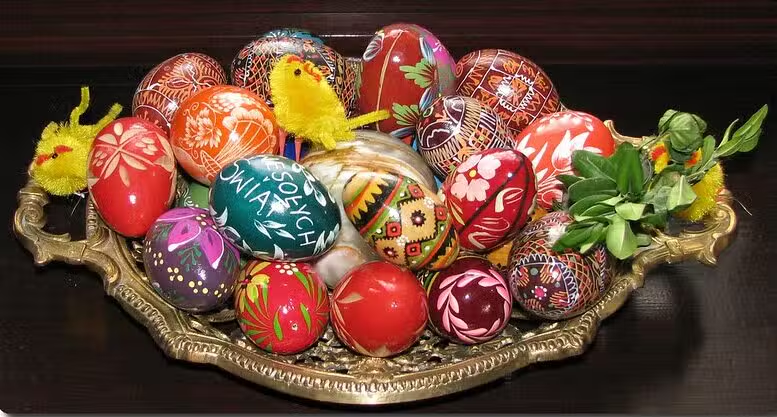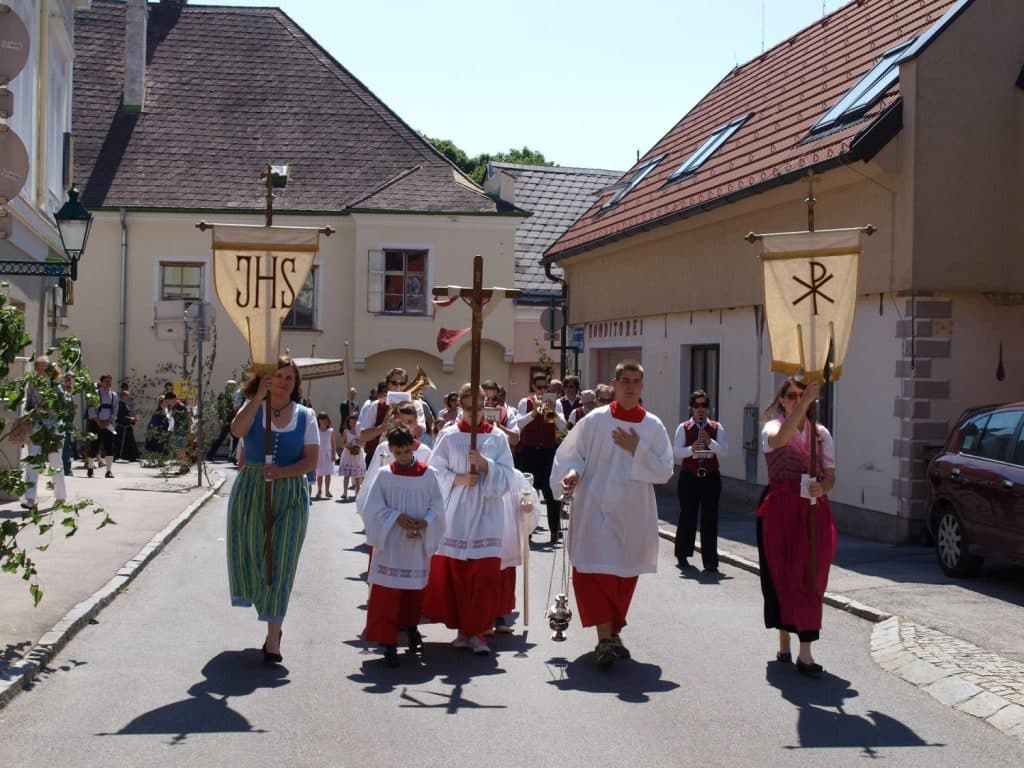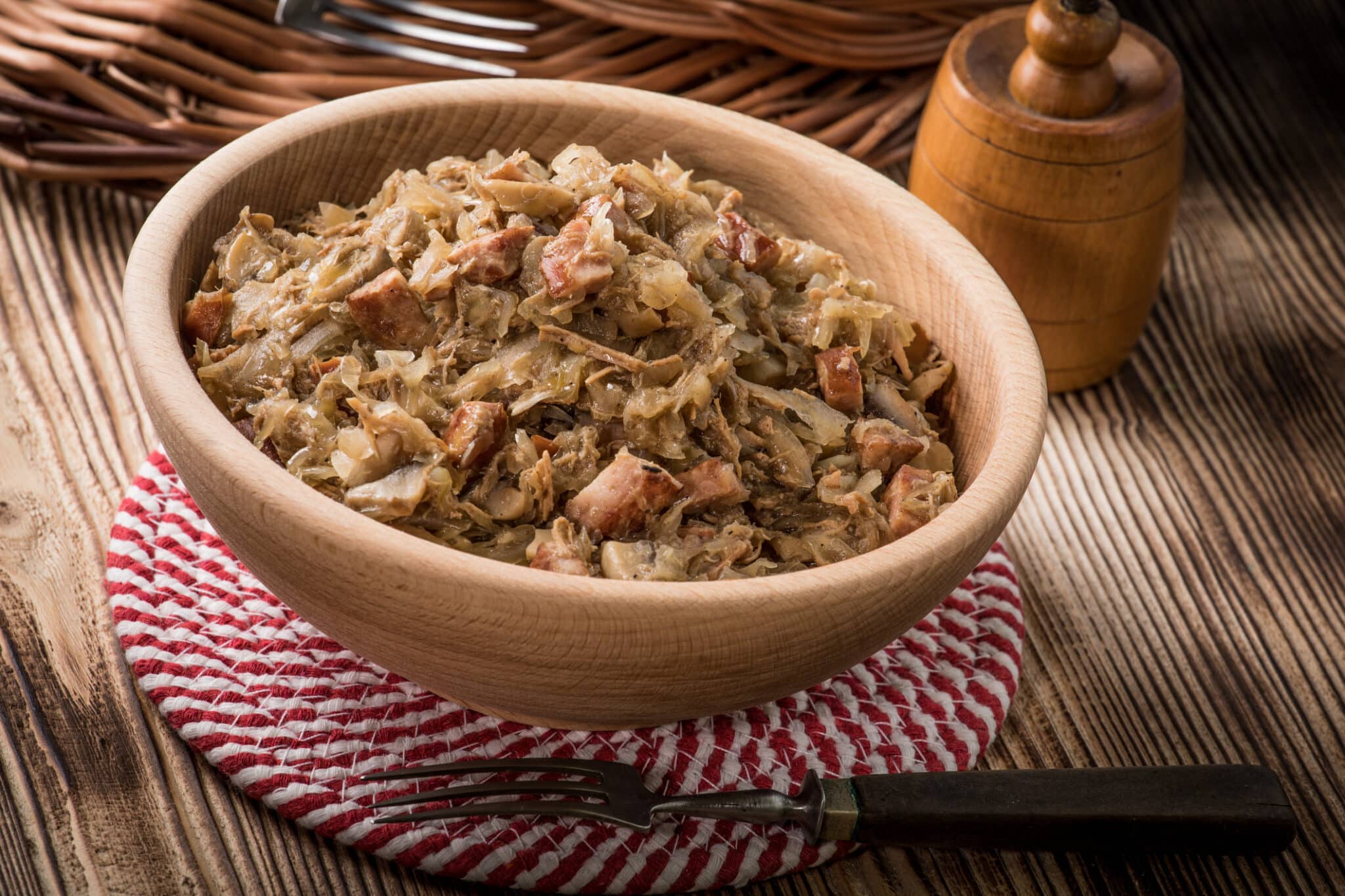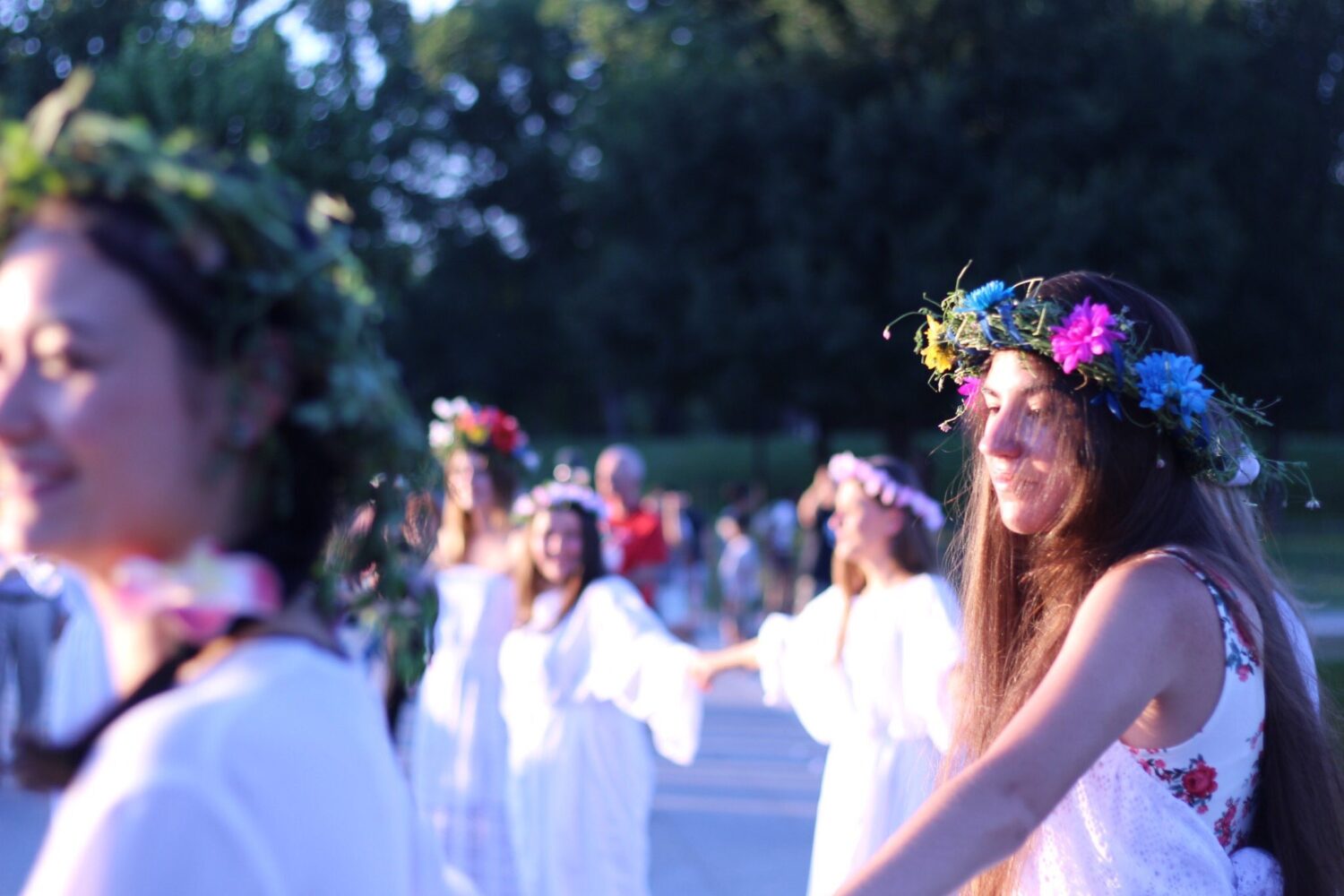Polish holidays are heavily steeped in Catholic tradtion. They all have a distinctly Polish flair to them, however, in their foods, colors, and celebrations. Note that in Poland nearly everything closes for public holidays! Everyone will be celebrating! Find out more about Polish holidays, their history, cultural significance, and related days off below.
Days Off
Long Weekends and Extra Days Off by Semester in 2026
| Spring | Summer | Fall | Winter |
| April 5-6 May 1-3, 24 |
June 4 August 15 |
November 1, 11 | January 1, 6 December 25-26 |
New Year
In Polish: Nowy Rok or Sylwester
January 1, 2026
day off
Poland celebrates the New Year from the evening of December 31 – January 1. The holiday is usually marked with dances, concerts, fireworks and – certainly – the abundance of local food. Among the long-standing New Year traditions one can point out is kulig, an annual sleigh ride, that used to be arranged by the Polish nobility and is a common practice amoung regular citizens. Numerous superstitions also come to the fore around this time of year – mostly those that deal with making the coming year more prosperous than the last. The Poles, for instance, will do their best to pay off all their debts before the clock strikes twelve on New Year’s Eve and make plenty of noise once the strike comes. Once, this was done to scare off evil forces that may threaten one’s prosperity. The tradition has likely survived because it is also a lot of fun.
December 31 is additionally celebrated in Poland as Saint Sylwester’s Day. Pope Sylvester I lived in the 4th century and is believed to have baptized Constantine, thereby making him the first Christian Roman emperor, a huge step up for the formerly underdog and oppressed religion in Rome. In terms of celebration, this really just means that New Year’s is sometimes called Sylwester in Polish.
To feel the atmosphere of the authentic Polish kulig, watch the video here:
Three Kings’ Day / Epiphany
In Polish: Trzech Króli / Olśnienie
January 6, 2026
day off
Three Kings’ Day is a Christian holiday celebrated to commemorate the Biblical visit of the Three Magi to little Jesus soon after his birth. In modern Poland, this is a major celebration, usually accompanied with vibrant parades, recreating the procession in which the Magi arrived to Jesus, and Carol singers (kolędnicy), dressed up as shepherds or even goats, carrying around a colourful star. On this day, Polish Catholics visit churches to bring home a piece of blessed chalk – which is later used to mark the front doors with letters C, M and B (refering at the Three Kings: Caspar, Melchior and Baltasar; and also refering to the Latin phrase Christus mansionem benedicat, meaning “May Christ bless this house”).
This day also marks the Epiphany, which celebrates the babtism of Jesus.
Keep in mind that this is a bank holiday – so, even though Polish bars and restaurants stay open, most offices, supermarkets, and banks will likely be closed this day.
Fat Thursday
In Polish: Tlusty Czwartek
February 12, 2026
variable dates; no day off
Fat Thursday, in America known as “Mardi Gras” (which is actually French for “Fat Thursday”), is a common celebration with variations in many Christian lands. Poland’s version is definitely more conservative than some, but is known for eating copious amounts of fatty foods, and especially pączki, which are filled donuts that are sometimes glazed, sometimes nut-covered, and always delicious. Poles will line up for hours to buy them from bakeries who mass-produce them every year…
Find out how to make pączki for this Polish holiday here.

Easter Sunday and Monday
In Polish: Wielkanoc and Poniedziałek Wielkanocny
April 5, 6 2026
variable dates; days off
In Poland, with its heavy Catholic majority, Easter is one of the most important holidays. Preparations may take up to a week – however, only Sunday itself and Monday afterwards are days off. It is the time for the Poles to spend time with their families and pay tribute to the long-standing Easter traditions.
All over the world, the egg represents new life and is a recurrent symbol of Easter; Poland is no exception in this sense. Decorating eggs (the finished product is called pisanki – from the Polish for “to write”) makes for the usual part of the celebration, quite often followed with another traditional ritual – egg-beating. On Easter morning, the whole family gathers together to exchange wishes and feast on a hearty, protien-heavy breakfast, which traditionally includes ham, sausage, roast meats, pâté (pasztet), eggs, horseradish and bread, marking the end of the 40-day fast that precedes the holiday.
The following day is usually less formal and is often known as Śmigus-Dyngus or “Wet Monday.” On Śmigus-Dyngus, people use bucket pails or water guns to soak each other with water – a custom especially popular with youth. Traditionally guys soak girls on Monday, and Tuesday is time for revenge, with girls soaking the guys.
May Holidays
In Polish: Majowka
May 1-3, 2026
days off
The beginning of May in Poland encompasses several holidays including – International Workers’ Day (Święto Pracy), Polish National Flag Day (Dzień Flagi) and Constitution Day (Święto Konstytucji Trzeciego Maja). Together, they form a long holiday weekend, known as Majowka.
International Workers’ Day has been celebrated on May 1 since the end of the nineteenth century in many European countries. In Poland, this holiday was first established in 1889, in order to commemorate the Haymarket Affair – a major labor demonstration and protest that took place in the US in 1886. As weather usually gets better around this time, locals often opt for outdoor activities and family picnics. Occasional marches happen in major cities to promote workers’ rights.
Polish National Flag day on May 2 was introduced relatively recently, in 2004, to celebrate the country’s flag. On this date, the Day of the Polish Community Abroad is also celebrated. Many Poles live and work abroad, in wealthier EU countries. While May 2 is technically not a public holiday, many Poles take this day off because it is the only date in the calendar which occurs between two national holidays. Thus, it is assumed that much of the country will simply stay closed from May 1-3.
Constitution Day on May 3 celebrates the adoption of the Polish Constitution, which is considered to be one of the country’s major achievements. The oldest constitution in Europe (and second oldest in the world after the US constitution), it was first adopted in 1791. The official holiday, however, was only established in 1918, when Poland became independent again and reinstituted its constitution. The holiday was cancelled under the communist government, but later, after the collapse of communism in Poland, the holiday was again restored. These days often see parades (including an annual military parade) and speeches from national Polish leaders.
Pentecost
In Polish: Zesłanie Ducha Świętego
May 24, 2026
variable date, state holiday, day off
Pentecost is a national holiday in Poland. Many churches hold special services on this day, while some Poles will decorate their homes with greenery, hoping that God’s blessings will come to their families. This is based on the popular name of the holiday – Zielone Świątki, which can be literally translated as the Green Christmastide and is connected to the warm and green summer season.
Corpus Christi
In Polish: Dzień Bożego Ciała or Boże Ciało
June 4, 2026
variable date; state holiday; day off

If you’re in the street in Poland on the 60th day after Easter, you will likely get a chance to witness the celebrations of Corpus Christi – a religious holiday with a long-standing tradition in Polish culture. Both the English (which is actually Latin) and Polish names refer to the Body of Christ (God) and the holiday commemorates the belief in transubstantiation: that the bread taken for sacrament turns into the Body of Christ. This major holiday is also celebrated in a number of other countries, including Austria, Croatia, Spain, and Portugal.
The usual Corpus Christi program includes a Holy Mass and a solemn procession afterwards, which combines carrying a monstrance (a cross that also resembles a sun) under a canopy, singing religious hymns and scattering flower petals along the route. Some Poles will decorate their windows and balconies especially if they know that procession will be passing by their street. Note that because of the celebrations, some roads may be blocked for several hours. As Corpus Christi always falls on a Thursday, it may also open an opportunity for a long weekend.
For more information about this Polish holiday, read these student observations.
Wianki
June 20, 2026
informal holiday / no day off
Wianki is an ancient Polish tradition celebrating midsummer, the summer solstice. Its most important aspect is laying wreaths of fresh flowers in water. “Wianka” actually means “wreath” in Polish. The holiday has seen large swings in its observation, mostly coinciding with the political fortunes of the Polish state. Today, with independent Poland reveling in its unique identity, you’ll find a massive, central festival held each year in Krakow and smaller, but still impressive festivals held throughout Poland with music, light, and food. They are held near a source of fresh water so that wreaths can be lain as part of the revelry.
For more information about this Polish holiday, read these student observations. You can also find out more about midsummer traditions here.
National Day of Rememberance
for the Warsaw Uprising
In Polish: Narodowy Dzień Pamięci Powstania Warszawskiego
August 1, 2026
no day off; one minute of silence is held at 5pm
Every August 1, Poland remembers the Warsaw uprising. People fill the streets at 5pm for a moment of silence before a parade of people marches, chanting slogans of the uprising.
For more information about this Polish day of rememberance, read these student observations. You can also find out more about how the uprising is memorialized in Warsaw here.
Assumption of the Blessed Virgin Mary
In Polish: Wniebowzięcie Najświętszej Maryi Panny
August 15, 2026
state holiday / day off
The Assumption is a major feast day, celebrated by Christians in many countries around the world and celebrates the belief that Mary, three days after her death, had her body assumed into heaven to be reunited with her soul. In Poland, it is usually associated with blessing and offering gifts of grains, flowers, herbs, and vegetables, as well as with the pilgrimage to the Jasna Góra Monastery – a famous Polish shrine devoted to Virgin Mary.
As the Virgin Mary is also the patron saint of the Polish army, this day is also Polish Army Day (Święto Wojska Polskiego), which adds to the customs of the celebration. On this day, many locals attend church services in order to remember Polish soldiers who died fighting for their country. Military parades take place too, highlighting all branches of the Polish military.
All Saints’ Day
In Polish: Wszystkich Świętych
November 1, 2026
day off
As its name suggests, All Saints Day originated as the day when all Church saints are to be celebrated as examples for those still walking the Earth.
All Saints’ also forms another holiday cluster. Although November 1 is a public holiday, many additionally take the next day off, November 2, for All Souls’ Day (Zaduszki). Here, the deceased are remembered. Both days are often used by Poles to travel, reconnect with their living family members and remember deceased loved ones by going to cemeteries.
Although officially frowned on by Catholic Church in Poland and somewhat controversial, Halloween is also making inroads in Poland. On October 31, costume parties can be found mostly for adults in bars and clubs, although some neighborhood trick-or-treating has been reported and jack-o-lanterns spoted in residential windows. Many attribute its rising popularity to mandatory English lessons in Polish schools.
Independence Day
In Polish: Narodowe Święto Niepodległości
November 11, 2026
day off

Independence Day is of particular significance in Poland.
Following the partitions of 1795, the country was divided between Austria, the Russian Empire, and the Kingdom of Prussia and ceased to exist for 123 years before reemerging after the end of World War I in 1918. In WWII, the country was occupied by Nazi Germany and then lived under a communist regime installed by the USSR until 1989.
On this day, parades are held across Poland, and many houses and buildings as well as public transportation are decorated with Polish flags. There is also an annual Independence Run – a marathon hosted in several cities with a number of participants who often dress in the colors of the Polish flag. 20,000 people participated in Warsaw in 2018.
Independence Day also coincides with the feast of St. Martin, when Poles traditionally eat St. Martin’s croissants – a desert that originated in the city of Poznań and is at least 150 years old. The recipe, however, hasn’t changed much since then – the famous croissants are still made of rough puff pastry, filled with poppyseeds, glazed, and decorated with nuts.
For more information about this Polish holiday, read these student observations.
First and Second Days of Christmas
In Polish: Pierwszy i drugi dzień Bożego Narodzenia
December 25-26, 2026
days off
The end of the annual holiday season in Poland is marked with one of the biggest celebrations of the year – Christmas. It starts on the evening of December 24th. The Christmas family dinner, called the Wigilia (sometimes the term is used to name not just the dinner, but the entire evening) does not start until the first star lights up in the sky – it symbolizes the Bethlehem star which led the three Magi to the newly born Jesus. When it is spotted, the celebrations begin. Among the first customary actions is the sharing of a wafer which comes from the traditions of the first Christians who shared bread in imitation of Jesus during the Last Supper. After that, family members exchange well wishes and sit down to the table which is usually covered with white cloth, a symbol of purity. Hay is often laid underneath the cloth it, to remind of the crèche in which Jesus was born.
On the Christmas table, there should be 12 dishes – and each of them needs to be tried, lest a shortage of that dish happens in the upcoming year. Among the commonly cooked Christmas foods are the red borsch, cabbage, mushrooms and plenty of fish, including the absolute must have – carp. It is believed that placing some of the carp’s scales in your wallet will lead to good fortune over the next year. However, if a fish doesn’t strike you as a lucky symbol, you can replace it with a poppy seed cake (makowiec), which is also lucky. Make sure there are plenty of poppys, as the belief holds that it’ll bring you as much money as there are seeds on the cake. Also, don’t be surprised if you see an empty chair at the table. Poles believe that no one should be alone or hungry on the Christmas evening, which is why they traditionally leave a spot for any unknown newcomer or might even invite somebody who they think might be lonely on December 24.
After dinner comes a midnight Christmas Mass (Pasterka) at one of the churches nearby (there is always a church nearby in Poland). After, they return home and look for gifts under the Christmas tree. After all gifts are unwrapped and joys shared, Poles usually go to bed – although still with a sense of wonder and optimism at the holiday spirit.
The celebrations usually continue on December 25 and 26. The Second Day of Christmas is also known as St. Stephen’s day and sometimes as Boxing Day, with people meeting up with their friends and relatives, attending special church services and getting a well-deserved holiday rest.
For more information about this Polish holiday, read these student observations.
You’ll Also Love

Bird’s Milk Cake: An Airy Russian Cake as Unusual as Its Name
Like the soft, meringue-filled candy on which it was based, bird’s milk cake (торт «Птичье молоко») consists mostly of filling. Thick but exceptionally airy layers of soufflé are separated by thin, fluffy slabs of cake, and the whole confection is covered in chocolate glaze. The cake’s fantastical name, connoting rare and wonderful luxury, is fitting. […]

Bigos: A Hearty Polish “Forever” Stew
Bigos, sometimes referred to as “Hunter’s Stew,” is a Polish dish comprised of slow-cooked meat, cabbage, and spices. There are many variations of this simple dish. Different meats such as pork, beef, and mutton in fresh, smoked, and/or sausage form can be used. Sauerkraut can be used instead of or with fresh cabbage. Red wine […]

Draniki, Latkes, Kartupeļu Pankūkas: The Simple Deliciousness of Potato Pancakes
Potato pancakes dominate coffee shop menus in Riga, Latvia—and for good reason! Meticulously prepared using grated potatoes, eggs, and flour, these pancakes are crisped to a brilliant golden hue, reaching a level of perfection that rivals the shining sun itself. The mouthwatering allure of this delightful dish is recognized worldwide. Following their inception in Eastern […]

Wianki: Polish Midsummer: Student Observations
Wianki (or, in English, Wreaths) is a Polish holiday event that takes its roots in the pre-Christian tradition of celebrating summer solstice as a day of fire, water, fertility, love and joy. Wianki is celebrated each year in June and is a Midsummer festival marking the summer solstice. While it has analogues throughout Europe, in […]

Pierogi, Pīrāgi, Varenyky: A Tour of Pastries and Dumplings
The dumplings and pastries of Europe’s northeastern flank have a story to tell. Their recipes, etymologies, and related traditions are intertwined in a complex historical knot. There are so many ancient connections that it is almost impossible to say which influenced the next. And yet, each dish is held up as a unique and integral […]





